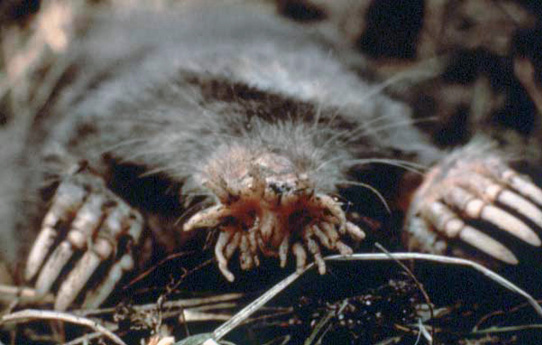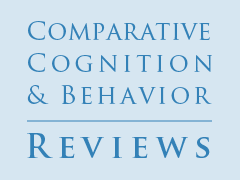More Situated Cognition in Animals: Reply to Commentators
Reading Options
Abstract
The commentators added a number of strands of discussion that expanded on embodied, extended, enactive, and distributive cognition across the animal kingdom and indeed beyond. I thank all the authors and continue the discourse in this reply. Action routines in the form of movements might form a common part of information delivery in perceptual systems; this means that sensory organs do not have to be highly acute in their entirety. Sensory systems and matched filters, outside of the central brain, seem to carry on some computations, exemplifying embodied cognition including some morphological computation. In addition to ratbots, animals operating neuroprosthetic devices make another kind of cyborg exhibiting extended and distributed cognition. Further examples of distributed cognition in the form of collective intelligence are presented, in humans and other animals, including a looming brand of trans-kingdom distributed cognition revolving around the gut bacteria of animals, now known to affect cognition even though the cognitive mechanisms remain unclear. All in all, the topic of situated cognition in animals looks even richer, and further dialogue is welcome.
Keywords: action, neuroprosthetic, morphological computation, distributed cognition
I would like to thank the commentators for their insights on situated cognition in animals, including humans. Without exception, they have continued and expanded the discussion, in a number of directions including comparative cognition, artificial intelligence, cognitive science, and philosophy. In reply, I am doing more of the same, continuing the fibers of discourse with ideas that came to me as I read the astute commentaries. And again, as with the target article from which the comments were generated (Cheng, 2018, this issue), this reply amounts to less than a full-fledged position and more a continuing dialogue.
Focus on Action and Behavior
I applaud and thank Pritchard (2018) for stressing the importance of observing and detailing behaviors and actions beyond those that end up in spreadsheets as dependent measures. Pritchard presents various scanning and looking routines of birds as well as insects. Such action routines might well form enactive cognition of the form that I described (Cheng, 2018), in which action supplements computations in central cognition. Indeed, in perceptual systems, actions often serve in information delivery. Primate vision and the tactile sense in the star-nosed mole furnish excellent additional cases.
It is textbook knowledge that the primate retina consists of a central part, the fovea, packed densely with receptors, including many cones that provide the sensory basis for color vision (Johnson, 2012). The periphery around the fovea has a lower density of receptors and less acute visual resolution. If something catches a primate’s attention in peripheral vision, the primate’s strategy is to move the eyes or make saccades to put the fovea on the object of interest. Action is crucial for conveying important visual information.
The star-nosed mole (Figure

Figure 1. The star-nosed mole, Condylura cristata, sports a fleshy protuberance on its face called the star nose. The star nose is a mechanoreceptor that is highly represented in the mole’s primary somatosensory cortex: 52% of the “moleunculus” (Catania, 1999; Catania & Kaas, 1997) is taken up by the star nose. Two foveal rays, one on each side, are especially sensitive. The foveal rays are located at the bottom nearest the center of the face. Photo from the U.S. National Parks Service, in the public domain. From Wikimedia creative commons: https://commons.wikimedia.org/wiki/File:Condylura.jpg
Cyborgs and the Brave New World of Neuroprosthetics
Brown (2018) describes animal–machine hybrid intelligence as a new—at least evolutionarily new—form of situated cognition (Wu et al., 2016; Yu et al., 2016; comment: Brown & Brown, 2017). In these studies, rats’ learning of a navigational task was supplemented by an artificial intelligence system feeding rats’ brains, via implants, information about what to do. Cyborg intelligence now also flows in the other direction, with brains directly telling machines what to do, again via implants, often in the motor cortex of primates (Capogrosso et al., 2016; Velliste, Perel, Spalding, Whitford, & Schwartz, 2008), including humans (Collinger et al., 2012; Hochberg et al., 2006; Wodlinger et al., 2014). Signals from the motor cortex move a cursor on a monitor (Hochberg et al., 2006) or operate robotic arms (Collinger et al., 2012; Velliste et al., 2008; Wodlinger et al., 2014). In Capogrosso et al. (2016), signals from monkeys’ motor cortex command the monkeys’ own limb after a spinal lesion via a remote computer receiving and giving signals via Bluetooth. The monkeys needed to carry only a small receiver and pulse generator that fit in a coat pocket. Besides raising questions in the philosophy of mind concerning extended and distributed cognition of a brave new kind, work on neuroprosthetic devices also raises a host of ethical concerns (Clausen et al., 2017).
Situated Cognition in Humans
I thank Lavoie et al. (2018) for enlightening us on situated cognition in humans. Besides the more typical form of human embodied cognition, in which aspects of action or thinking about action participate in cognition, Lavoie et al. present interesting cases of cognition in the peripheral nervous system as well, the sense attributed to some arm movements in the octopus (Cheng, 2018). And I thank Hewitson, Kaplan, and Sutton (2018) for distinguishing between morphology that cuts down on computation, which could be called decomputation, and morphology that actually contributes computation, for which the term morphological computation is truly apt. It seems to me that cases that mix embodied cognition with morphological computation are found in certain matched filters (in Wehner’s, 1987, sense). Japyassú and Laland (2017) explicitly differentiated matched filters from their cases of extended cognition because central cognition as a rule does not influence the operation of matched filters, but matched filters can serve as cases of embodied cognition. Some of them rely on morphology to help with computations. It is again textbook knowledge that in the primate eye, horizontal cells carry out lateral inhibition to sharpen up contrast at visual edges (Johnson, 2012). I would count lateral inhibition as a bit of computing, and morphology, the arrangement of cells in this case, plays a role in the computation. The horizontal cell spreads over a number of bipolar cells, and the anatomical arrangement means that horizontal cells inhibit bipolar cells nearby; the anatomy defines the range of inhibition. In all kinds of foveas as well, anatomical factors, whether in the density of receptors in primate eyes or density of fibers to the cortex in the star nose of the star-nosed mole (Catania, 1999), contribute to cognition.
In perusing literature on counting in trying to come up with an example of morphological computation on a larger anatomical scale, I came across authors claiming that even numerical cognition, seemingly an abstract mathematical realm, is embodied (R. A. Carlson, Avraamides, Cary, & Strasberg, 2007; Fischer, 2018). Thus, bodily actions such as pointing, or even nodding, improve counting in humans (R. A. Carlson et al., 2007). Such findings also constitute enactive cognition in that seemingly unrelated actions are helping out cognitive processes. With regard to morphological computation, perhaps the human use of fingers in counting might serve as an example. In counting in thought—imagine, for instance, tallying the number of U.S. presidents in the 20th century—one might raise a finger for each person thought up in order to relieve working memory of having to hold the current count.
A form of distributed human cognition that comes to mind from reading Lavoie et al. (2018) is transactive memory (Wegner, 1987). In transactive memory, the memory load is shared among a team of multiple humans, such as intimate couples, so that the total knowledge store of the team far exceeds what each member of the team knows. Besides intimate couples, Wegner also discussed departments of organizations, patient–doctor pairs, and teacher–student pairs as examples of transactive memories at work. Distributed cognition is widespread in current human cultures, and may well have helped to shape the course of human evolution in contributing to cumulative culture (Richerson & Boyd, 2005), on which a few more comments follow in the next section.
Musings on Other Philosophical Issues
I thank Hewitson et al. (2018) for elucidating and straightening out some philosophical loose ends, for broadening the topics of morphological computation and the mutual manipulability criterion, and for their interesting historical account. Especially illuminating are their further developments of the concept of mutual manipulability. These points are helpful in guiding empirical research. I thank Theiner (2018) for expertly explicating a variety of distributed cognition using interesting examples. This topic was perhaps the most underdone in the target article (Cheng, 2018), and a few more illustrations are worth adding.
Leafcutter ants not only are astounding in having invented agriculture tens of millions of years ago and for building “civilization by instinct” (Hölldobler & Wilson, 2011) but also exhibit an interesting form of teamwork in carrying leaves back. The leaves are used to feed fungus in their farms. The worker ants come in multiple castes and greatly vary in size. Big leafcutting workers possess strong muscles and mandibles for cutting foliage. In hauling back a piece of leaf, the carrier also totes a small minor along. One service that the hitchhiker provides is fly swatting, keeping pesky and destructive parasitic flies at bay. This is impossible to accomplish when a leafcutter is hoisting her hefty luggage. Cognitive and muscular work are thus both distributed across two animals, and such distributed cognition works to maintain the enormous ecological impact that this clade wields.
Distributed cognition may also have cumulative effects over a stretch of time, leading to cumulative culture. In cumulative culture, practices improve over generations, with new generations advancing what older generations achieved. Cumulative culture is well known in humans (Richerson & Boyd, 2005), but its occurrence in other species is uncertain. Recently, Sasaki and Biro (2017; see also Biro, Sasaki, & Portugal, 2016) showed what they called cumulative culture in the homing performance of pairs of homing pigeons. Sasaki and Biro measured homing efficiency in single pigeons or pairs of homing pigeons repeatedly released from an initially unfamiliar site. In the interesting experimental group that showed cumulative improvement, bird A homed singly for 12 trips; then A was paired with a new bird, B, for 12 trips; then A was retired and B was paired with a new bird, C, for 12 trips; then C and D flew 12 trips; then D and E flew 12 trips. The two control groups consisted of single pigeons homing repeatedly for 60 trips, or pairs of pigeons performing the trip 60 times. The exciting result was that the experimental group with a substitution at each generation (12 trips) improved over generations, whereas the control groups reached a plateau and stayed there. The improvements were found at the end of each generation for the substitute (experimental) group; at the start of each generation, this group got worse. This last finding is not surprising considering that one of two team members was naïve at the start of each generation. Nevertheless, in each generation the substitute group ended up improving to a higher level than the control groups’ performance level. It would have been good to carry the experiment on for longer, as it appeared from the data that the experimental group had not yet reached asymptote. If this phenomenon shows cumulative culture, as the authors maintained, it adds a new perspective to the evolution of behavior and cognition.
My final flight of philosophical musing foreshadows a form of distributed cognition looming on the horizon. Gut bacteria are now known to affect cognition via multiple routes, and thought to influence syndromes such as anxiety, autism spectrum disorders, depression (de la Fuente-Nunez, Meneguetti, Franco, & Lu, 2017; Mason, 2017), and, most recently, even cognitive development (A. L. Carlson et al., 2018). This topic is still looming in that we are still unsure of how gut bacteria are affecting cognitive processes, although a number of physiological routes have been suggested. We do have evidence that human microbiota has changed in history, including large changes in modern times (Gillings, Paulsen, & Tetu, 2015; Smits et al., 2017), so that investigation of this issue holds much practical and philosophical importance. I thus echo Theiner (2018) in alerting us to cross-kingdom distributed cognition.
In conclusion, distributed cognition of the collective-intelligence variety should be added to the list, in addition to distributed cognition of the reduced-brain variety and to the three e’s of cognition: embodied, extended, and enactive cognition. The comments show that this entire topic of situated cognition is richer than what was painted in my target article (Cheng, 2018) and promises even more ideas and research leads. Let the dialogue continue.
References
-
Biro, D., Sasaki, T., & Portugal, S. J. (2016). Bringing a time–depth perspective to collective animal behaviour. Trends in Ecology & Evolution, 31, 550–562. doi:10.1016/j.tree.2016.03.018
-
Brown, M. F. (2018). Musings on comparative directions for situated cognition. Comparative Cognition & Behavior Reviews, 13, 21–24. doi:10.3819/CCBR.2018.130002
-
Brown, M. F., & Brown, A. A. (2017). The promise of cyborg intelligence. Learning & Behavior, 45, 5-6.
-
Capogrosso, M., Milekovic, T., Borton, D., Wagner, F., Moraud, E. M., Mignardot, J.-B., … Courtine, G. (2016). A brain–spine interface alleviating gait deficits after spinal cord injury in primates. Nature, 539, 284–288. doi:10.1038/nature20118
-
Carlson, A. L., Xia, K., Azcarate-Peril, M. A., Goldman, B. D., Ahn, M., Styner, M. A., … Knickmeyer, R. C. (2018). Infant gut microbiome associated with cognitive development. Biological Psychiatry, 83, 148–159. doi:10.1016/j.biopsych.2017.06.021
-
Carlson, R. A., Avraamides, M. N., Cary, M., & Strasberg, S. (2007). What do the hands externalize in simple arithmetic? Journal of Experimental Psychology: Learning, Memory, and Cognition, 33, 747–756. doi:10.1037/0278-7393.33.4.747
-
Catania, K. C. (1999). A nose that looks like a hand and acts like an eye: The unusual mechanosensory system of the star-nosed mole. Journal of Comparative Physiology A, 185, 367–372. doi:10.1007/s003590050396
-
Catania, K. C., & Kaas, J. H. (1997). Somatosensory fovea in the star-nosed mole: Behavioral use of the star in relation to innervation patterns and cortical representation. Journal of Comparative Neurology, 387, 213–233. doi:10.1002/(SICI)1096-9861(19971020)387:2<215::AID-CNE4>3.0.CO;2-3
-
Catania, K. C., & Remple, F. E. (2004). Tactile foveation in the star-nosed mole. Brain, Behavior and Evolution, 63, 1–12. doi:10.1159/000073755
-
Cheng, K. (2018). Cognition beyond representation: Varieties of situated cognition in animals. Comparative Cognition & Behavior Reviews, 13, 1–20. doi:10.3819/CCBR.2018.130001
-
Clausen, J., Fetz, E., Donoghue, J., Ushiba, J., Spörhase, U., Chandler, J., … Soekadar, S. R. (2017). Help, hope, and hype: Ethical dimensions of neuroprosthetics. Science, 356, 1338–1339. doi:10.1126/science.aam7731
-
Collinger, J. L., Wodlinger, B., Downey, J. E., Wang, W., Tyler-Kabara, E. C., Weber, D. J., … Schwartz, A. B. (2012). High-performance neuroprosthetic control by an individual with tetraplegia. Lancet, 381, 557–564. doi:10.1016/s0140-6736(12)61816-9
-
de la Fuente-Nunez, C., Meneguetti, B. T., Franco, O. L., & Lu, T. K. (2017). Neuromicrobiology: How microbes influence the brain. ACS Chemical Neuroscience, 9, 141–150. doi:10.1021/acschemneuro.7b00373
-
Fischer, M. H. (2018). Why numbers are embodied concepts. Frontiers in Psychology, 8, 2347. doi:10.3389/fpsyg.2017.02347
-
Gillings, M. R., Paulsen, I. T., & Tetu, S. G. (2015). Ecology and evolution of the human microbiota: Fire, farming and antibiotics. Genes, 6, 841–857. doi:10.3390/genes6030841
-
Hewitson, C., Kaplan, D. M., & Sutton, J. (2018). Yesterday the earwig, today man, tomorrow the earwig? Comparative Cognition & Behavior Reviews, 13, 25–30. doi:10.3819/CCBR.2018.130003
-
Hochberg, L. R., Serruya, M. D., Friehs, G. M., Mukland, J. A., Saleh, M., Caplan, A. H., … Donoghue, J. P. (2006). Neuronal ensemble control of prosthetic devices by a human with tetraplegia. Nature, 442, 164–171. doi:10.1038/nature04970
-
Hölldobler, B., & Wilson, E. O. (2011). The leafcutter ants. New York, London: W. W. Norton.
-
Japyassú, H. F., & Laland, K. N. (2017). Extended spider cognition. Animal Cognition, 20, 375–395. doi:10.1007/s10071-017-1069-7
-
Johnson, G. B. (2012). The living world (7th ed.). New York, NY: McGraw-Hill.
-
Lavoie, E. B., Bertrand, J. K., Stone, S. A., Wispinski, N. J., Sawalha, J., & Chapman, C. S. (2018). Examining the “species” of situated cognition in humans. Comparative Cognition & Behavior Reviews, 13, 31–34. doi:10.3819/CCBR.2018.130004
-
Mason, B. L. (2017). Feeding systems and the gut microbiome: Gut-brain interactions with relevance to psychiatric conditions. Psychosomatics, 58, 574–580. doi:10.1016/j.psym.2017.06.002
-
Pritchard, D. J. (2018). Situated cognition and the function of behaviour: a commentary on Cheng (2018). Comparative Cognition & Behavior Reviews, 13, 35–40. doi:10.3819/CCBR.2018.130005
-
Richerson, P. J., & Boyd, R. (2005). Not by genes alone. Chicago, IL: University of Chicago Press.
-
Sasaki, T., & Biro, D. (2017). Cumulative culture can emerge from collective intelligence in animal groups. Nature Communications, 8, 15049. doi:10.1038/ncomms15049
-
Smits, S. A., Leach, J., Sonnenburg, E. D., Gonzalez, C. G., Lichtman, J. S., Reid, G., … Elias, J. E. (2017). Seasonal cycling in the gut microbiome of the Hadza hunter-gatherers of Tanzania. Science, 357, 802–806. doi:10.1126/science.aan4834
-
Theiner, G. (2018). Collaboration, exploitation, and distributed animal cognition. Comparative Cognition & Behavior Reviews, 13, 41–48. doi:10.3819/CCBR.2018.130006
-
Velliste, M., Perel, S., Spalding, M. C., Whitford, A. S., & Schwartz, A. B. (2008). Cortical control of a prosthetic arm for self-feeding. Nature, 453, 1098–1101. doi:10.1038/nature06996
-
Wegner, D. M. (1987). Transactive memory: A contemporary analysis of the group mind. In B. Mullen & G. R. Goethals (Eds.), Theories of group behavior (pp. 185–208). New York, NY: Springer. doi:10.1007/978-1-4612-4634-3_9
-
Wehner, R. (1987). “Matched filters”—Neural models of the external world. Journal of Comparative Physiology A, 161, 511–531. doi:10.1007/BF00603659
-
Wodlinger, B., Downey, J. E., Tyler-Kabara, E. C., Schwartz, A. B., Boninger, M. L., & Collinger, J. L. (2014). Ten-dimensional anthropomorphic arm control in a human brain−machine interface: Difficulties, solutions, and limitations. Journal of Neural Engineering, 12, 016011. doi:10.1088/1741-2560/12/1/016011
-
Wu, Z., Zheng, N., Zhang, S., Zheng, X., Gao, L., & Su, L. (2016). Maze learning by a hybrid brain–computer system. Scientific Reports, 6, 31746. doi:10.1038/srep31746
-
Yu, Y., Pan, G., Gong, Y., Xu, K., Zheng, N., Hua, W., … Wu, Z. (2016). Intelligence-augmented rat cyborgs in maze solving. PLoS One, 11, e0147754. doi:10.1371/journal.pone.0147754

